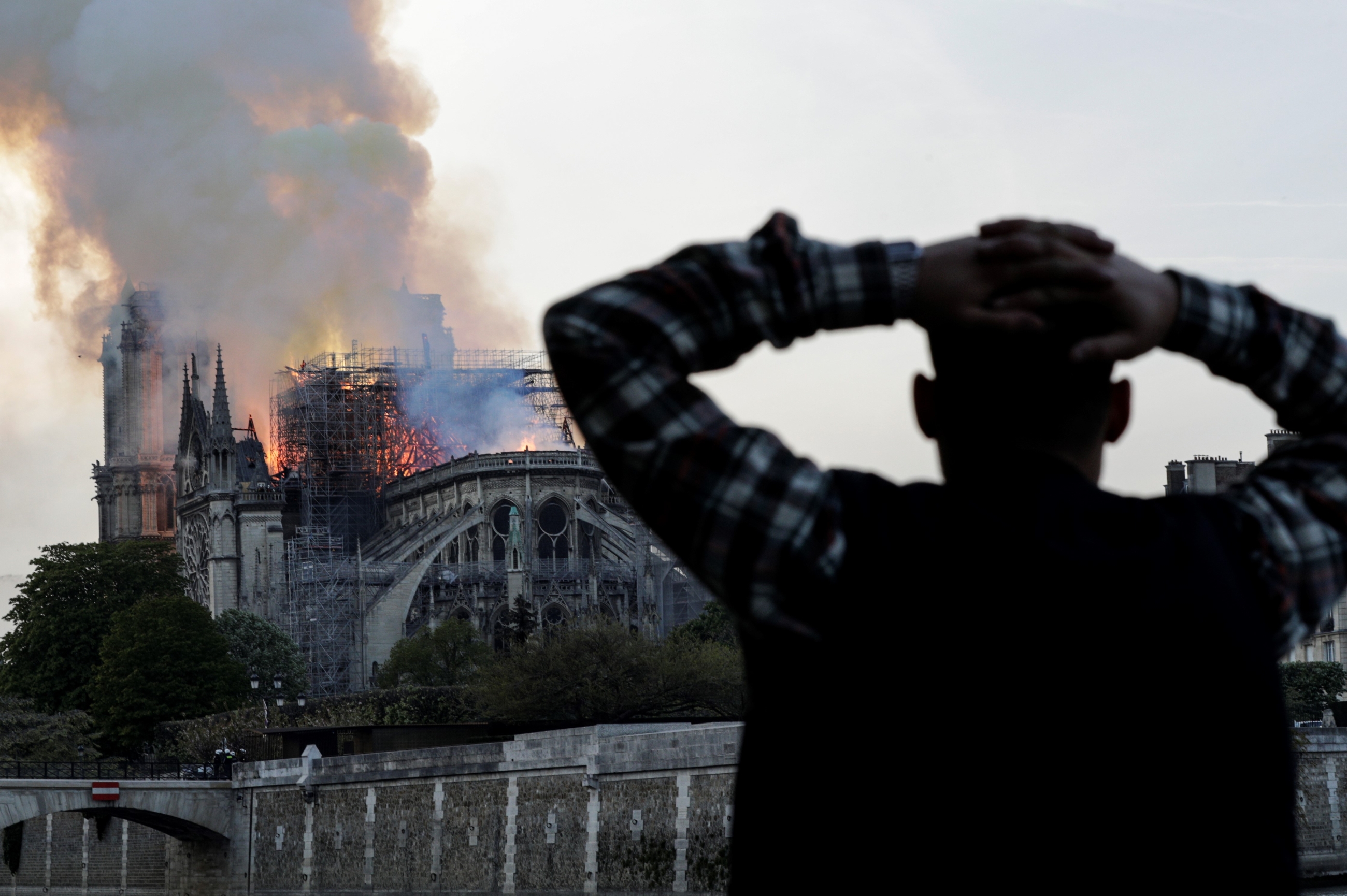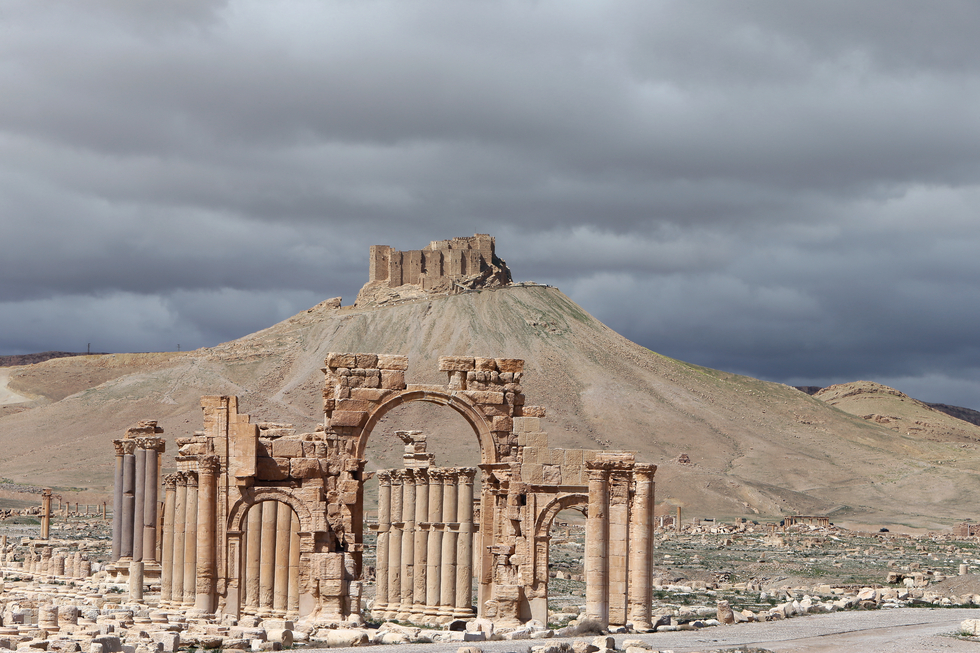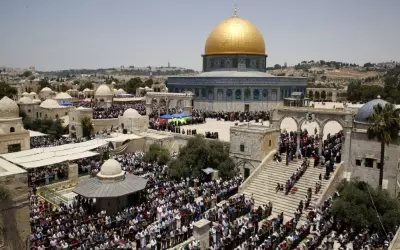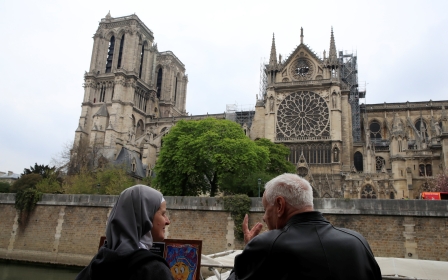France's Notre Dame outpouring is a metaphor for (in)humanity

“God has been replaced, as he has all over the West, with respectability and air conditioning” - Amiri Baraka
When the famed spire folded, it pierced the hearts of a nation.
The grief for the 800-year-old Notre Dame Cathedral in Paris unfurled in real time. Social media timelines and international news networks amplified the agony as the blaze razed the roof and threatened to swallow cultural treasures like the Crown of Thorns.
Thoughts became tributes, as France's ultra-rich outbid each other to contribute more than a billion euros worth of donations for the restoration project. That the donations poured in as France faces spiralling dissent over economic inequality and rising living costs is remarkable.
That the donations poured in as France faces spiralling dissent over economic inequality and rising living costs is remarkable
The gilets jaunes protesters, who have been rallying for five months against rising income inequality, see the "kind" donations as emblematic of the failings of the social and economic priorities in the country.
New MEE newsletter: Jerusalem Dispatch
Sign up to get the latest insights and analysis on Israel-Palestine, alongside Turkey Unpacked and other MEE newsletters
It only further demonstrated the disconnect between the elite and the rest of society.
For those who have refused to ride the wave of grief, the criticism has centred on the disproportionate media coverage gifted to the blaze over the destruction of historical sites in parts of the globe under occupation or war.
Secondly, to expect the global south to grieve as much for destroyed artefacts or historical sites in the Arab, African or Asian world as they would for an icon in the western world, Notre Dame, is simply unreasonable.
Further, to claim that there was no outrage or lament for the destruction of Mali’s ancient mausoleums or the shrines in Samara, Iraq is simply not true.
The destruction of "a Palmyra" in Syria must compete first with the power of narrative built by centuries of Euro-centricism as well as physical and psychological colonisation before it can secure empathy.
Unlike the Islamic State’s destruction of the Grand al-Nuri Mosque of Mosul, for instance, or the US-led wrecking of Raqqa, spaces and places that are granted limited and ambivalent meaning through the endless dehumanisation of its people, the devastation suffered by Notre Dame is just ambiguous enough to be a metaphor for a hapless France facing an assault on its civilisation.
This is partially why it was easy for xenophobic and Islamophobic rumours to spread about the origin of the blaze.
A symbol of 'secular' France
Images of hundreds of mourners, held back by red police tape on the streets of Paris, and looking on longingly from the banks of the Seine, seemed to reflect "a defeat" heaped upon the French nation, even western civilization.
"Notre Dame is our history, it's our literature, it's our imagery,” Emmanuel Macron, the French president, told his people. "It's the place where we live our greatest moments, from wars to pandemics to liberations. ... I'm telling you all tonight - we will rebuild this cathedral together. This is probably part of the French destiny."
The devastation suffered by Notre Dame is just ambiguous enough to be a metaphor for a hapless France facing an assault on its civilisation
The Catholic cathedral, its rose windows and the 28 statues that make the Gallery of Kings, has long been seen as a symbol of Europe and France. As Allan Temko writes in Notre Dame of Paris: the biography of a Cathedral: Notre Dame was France, was Paris, was Europe itself because it was built at a time of improved living standards, of rediscovered science, "that several historians have called the period a renaissance".
"Paris was a perfect symbol of the improving times."
The overnight mobilisation of $950m from rich individuals, institutions and companies for the immediate restoration of Notre Dame (not coincidentally seen, and attacked, as a symbol of monarchy during the French revolution) is a continuation of a project that serves to uphold ornaments of progress rather than deliver real, substantive economic justice to those who deserve it.
To fix this cathedral in such haste is only a matter of restoring class prestige; grief - no matter how supposedly wide-spread or democratic - cannot mask this truth.
A tale of self-indulgence
Ultimately, the story of this blaze is not about literature or imagery. Rather, it is a tale of self-indulgence, historical revisionism and systematic erasure of the other, a long-time European trait.
And how unflinching is French duplicity that it can snort secularism today, knuckle down on practising Muslims as state underlings and yet hold up a church from the Middle Ages as the symbol of French resilience?
Given that we cannot expect the western world to treat the lives of "others" as they would their own, we surely cannot expect them to treat our history, our monuments and our holy places as they would their own.
But to watch billionaires and others, including the French president, encourage such a gargantuan fundraising effort for the restoration effort screams something else: not only do our lives mean more, but our symbols mean more than your lives.
The immediacy of action, including tax breaks for those who donate to the restoration project, is an affront to those who have lost their lives, homes, and places of worship to wars, occupation and climate change elsewhere and have never been compensated.
It also alludes to the maliciousness behind France’s and Europe’s approach to migrants and refugees who have made their way to the continent in search of a better life.
Banality of symbols
Look no further than "Calais Jungle" in northern France, or the scourge of homelessness on the streets of Paris itself.
Just days before this fire set western civilization alight, Leilani Farha, the UN’s special rapporteur for housing, urged France to act on the “dire” living conditions of some 600-700 refugees.
Meanwhile in Paris itself, while people on the internet shed tears for a cathedral missing a roof, 3000 people will continue to sleep on the streets without shelter each night.
That the partial destruction of Notre Dame Cathedral would spur a resolve for a rapid show of "unity", as if France has been attacked, rather than a genuine conversation about the banality of objects and symbols and the temporality of life itself, is precisely why those Gargoyles stand firm and stare down with dislike.
Opinions expressed in this article are author’s own and do not necessarily reflect the editorial policy of Middle East Eye.
Middle East Eye delivers independent and unrivalled coverage and analysis of the Middle East, North Africa and beyond. To learn more about republishing this content and the associated fees, please fill out this form. More about MEE can be found here.








